Fellowships 2025
Kate Sicchio
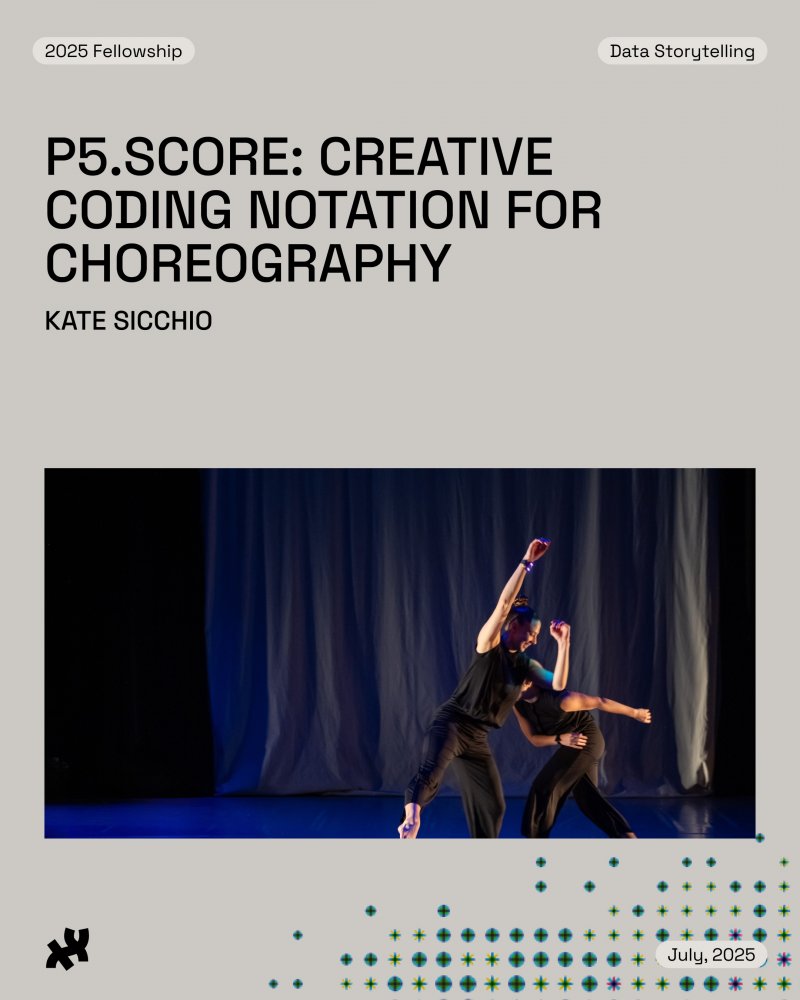
Kate Sicchio is a choreographer and media artist whose work merges movement with code, systems, and digital tools. She creates performances using live coding, wearable tech, and real-time systems, exploring how bodies and machines co-compose. Her work has been presented internationally across the US, UK, Europe, Australia, and the Middle East, and has spoken at events such as Eyeo, Resonate, and the EU Parliament.
p5.score is a choreographic project that uses p5.js to generate a visual iconography through code, creating a dynamic and interactive dance performance environment. Central to p5.score are workshops designed for choreographers and dancers to engage with computational thinking, experiment with algorithmic choreography, and explore new relationships between body and code. These sessions invite participants to reimagine the role of the computer in dance-making, fostering creative dialogue between movement, code, and visual form.
Leonardo Aranda
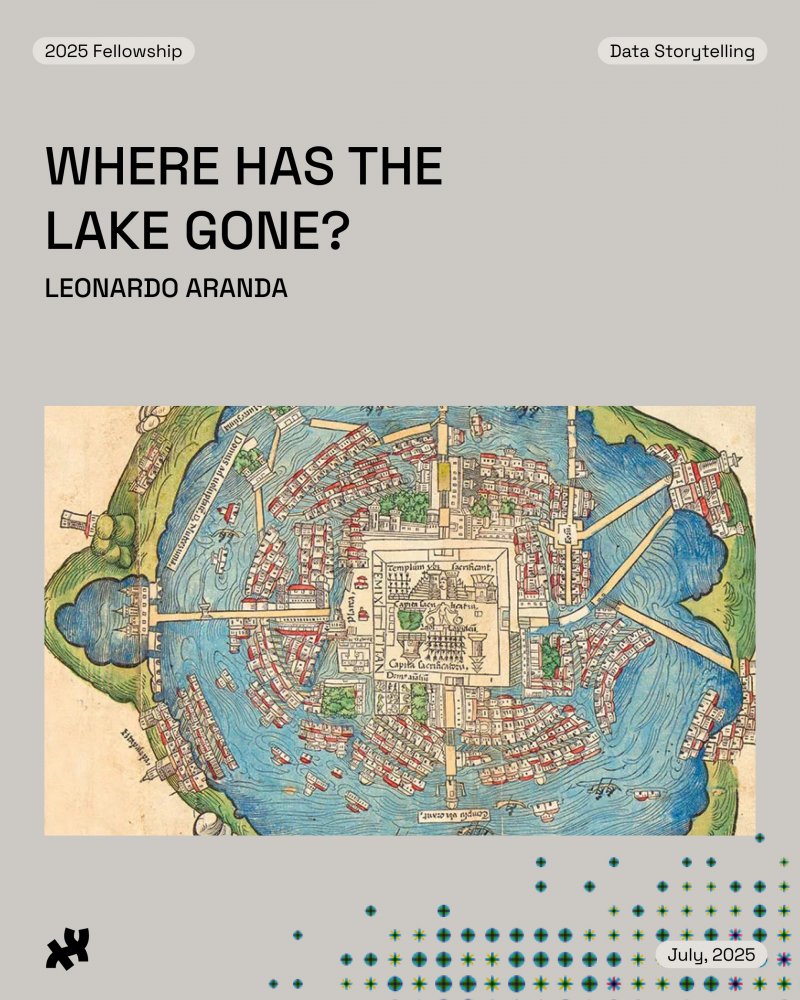
Leonardo Aranda is an electronic artist from Mexico City. PhD in Media Study from SUNY Buffalo. He is the director of Medialabmx, a non-profit organization focused on research on the links between art, technology and politics. His work focuses mainly on the use of new media and its possible intersections with politics, participation and citizenship. He has exhibited internationally in group exhibitions and festivals in countries such as Mexico, Germany, Russia, Austria, the United States, Spain, Canada and Brazil. His work is part of the Electronic Literature Organization third and fourth collection.
“Where Has the Lake Gone?” is an immersive installation where experimental cartography articulates different scales and dimensions of Mexico City to tells its history from the perspective of its bodies of water. Originally built on a lake, the city currently suffers from constant droughts caused by uncontrolled growth and exploitation of its water resources. The installation will juxtapose archival information on urban mapping and infrastructure, historical and live data on climate information and water resources, and data produced experimentally for the installation. The project aims to make visible the environmental problems facing the city and their relationship to urban development.
Daniel Corbani
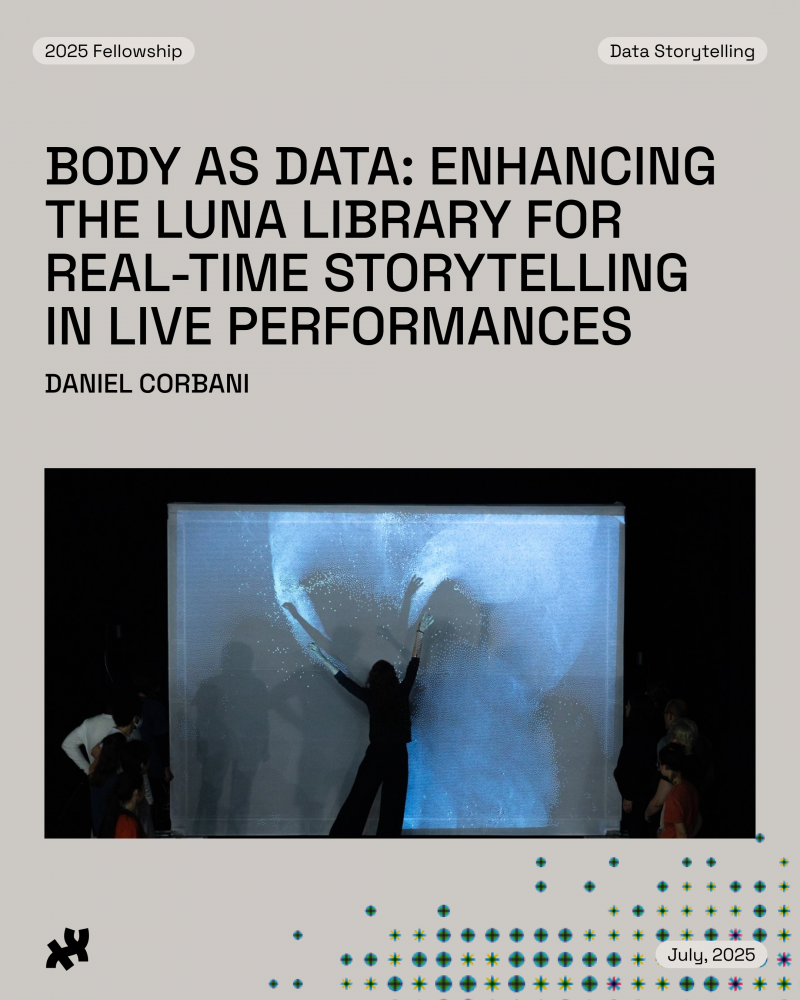
Daniel Corbani is a visual artist and creative coder specializing in real-time interactive systems for live performance. His work merges computer vision, projection mapping, and generative visuals to create immersive experiences where dancers and actors appear to manipulate digital elements organically. By bridging physical movement with responsive virtual imagery, he transforms stages into dynamic, dreamlike spaces. Passionate about accessibility, he also develops open-source tools to democratize interactive art, empowering performers and artists to explore new narrative possibilities.
“Body as Data: Enhancing the Luna Library for Real-Time Storytelling in Live Performances” enhances the Luna Video Mapping Library for Processing, simplifying real-time projection mapping and computer vision for live performances. By adding user-friendly functions—such as background subtraction, blob tracking, and generative content interaction—it enables artists to create immersive visuals with minimal coding. The addition of a GUI simplifies setup, enabling artists without coding skills to use the tool. Designed for performers, the system translates movement into dynamic projections, blending physical and digital elements. As an open-source initiative, it prioritizes accessibility and community engagement.
Maryam Kazeem & Jubril Olambiwonnu
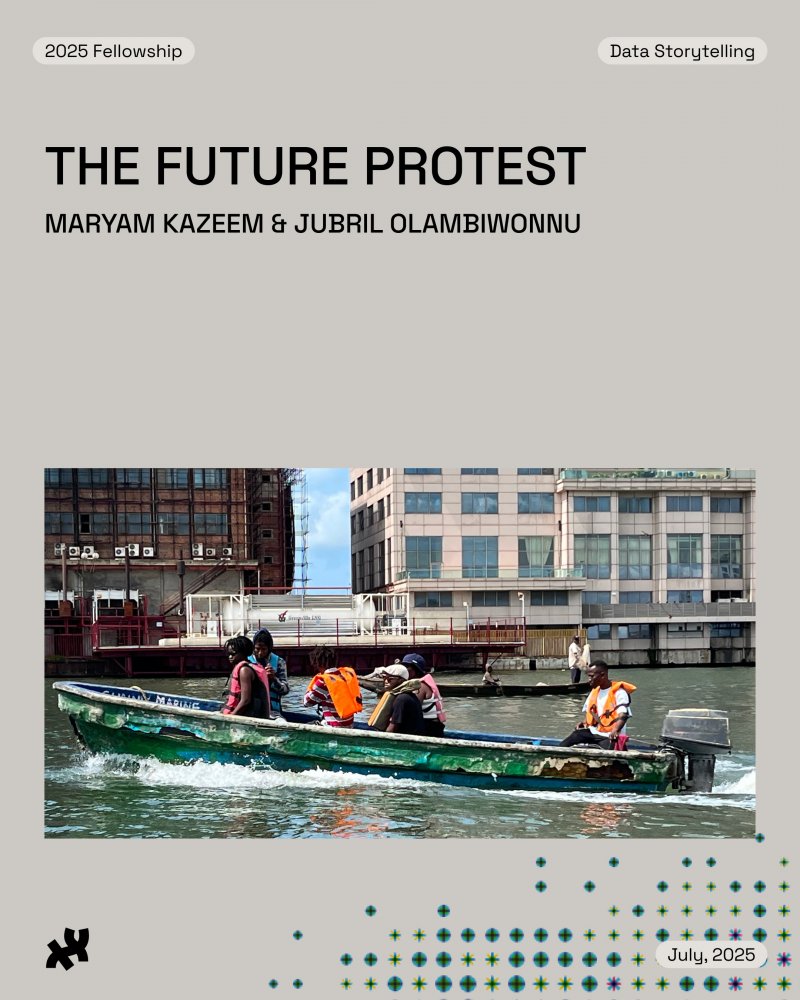
Maryam Kazeem is a writer, researcher, and the founder of iranti press, a publishing experiment based in Lagos. Her creative work makes connections between archival research and the multidimensionality of language, and she holds an MFA from the California Institute of the Arts, where she taught courses in black performance and literary studies. She is a recent recipient of a Prince Claus SEED Award (2024) and is currently at work on her first novel.
Jubril Olambiwonnu is a London-based software engineer and creative technologist. For more than a decade he has engineered high-scale platforms across payments and identity verification. Beyond client work, he explores culture through code in projects such as The Future Protest, a speculative cartography of Lagos Lagoon, and Atunda, an AI choreography archive. He is also the founder of Poser, an AI virtual-fitting startup that enables online shoppers to buy clothes with confidence.
Using the generative capacity of protest as a "glitch", which can create an opening, The Future Protest invites a wider public to contemplate the Lagos Lagoon’s sonic histories. The project explores the Lagoon’s ecology through a phonocenic lens and asks how the Lagoon hears and what the effects of this hearing are. On a digital platform that streams a video feed of the present-day Lagoon, participants record a description of a protest they would like to hold in the future. Through a poethic algorithm which derives energy values from pauses and gaps within the speaker's recording, a speculative and ephemeral mangrove forest re/maps and un/situates the Lagoon as we know it.
elekhlekha อีเหละเขละขละ - Kengchakaj–เก่งฉกาจ & Nitcha Tothong–ณิชชา โตทอง
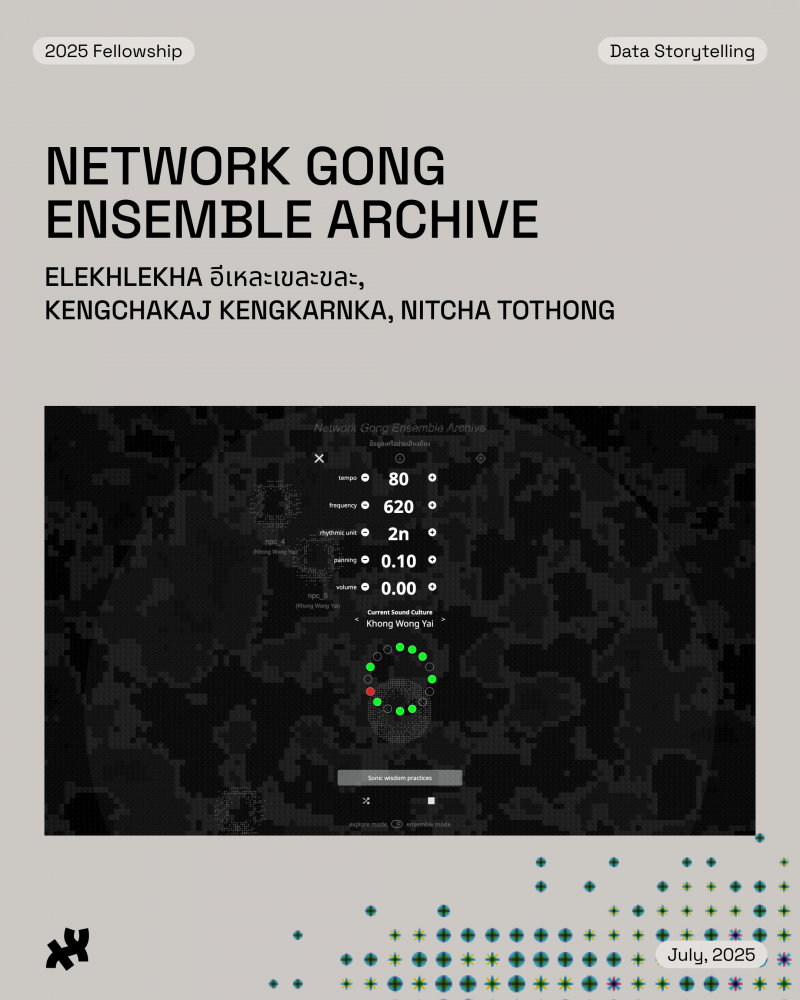
elekhlekha อีเหละเขละขละ is a collaborative research-based group consisting of Thai diaspora Bangkok-born, Brooklyn-based artists, Kengchakaj–เก่งฉกาจ and Nitcha Tothong–ณิชชา โตทอง. They delve into subversive storytelling by exploring non-hegemonic sounds and visual archives, historical research, decoding, and unlearning biases.
They were awarded the 2022 Lumen Prize Gold Award.
Network Gong Ensemble Archive is a communal sonic experience site, an experimental interactive auditory archive of Southeast Asian sound cultures. It is rooted in alternative collaboration and agency-sharing practices, drawing from the communal gathering of a gong ensemble based on Southeast Asian Indigenous musical rituals.
The archive serves as an experimental repository for sound culture data, allowing us to explore ways to gather, digitize, compile, and capture nuanced and embodied sounds that reflect Southeast Asian traditions. Sound cultures are primarily passed down aurally, and intonation diversity is common and valued.
Payton Croskey, Ana Cardenas-Gasca, Jiwon Ham
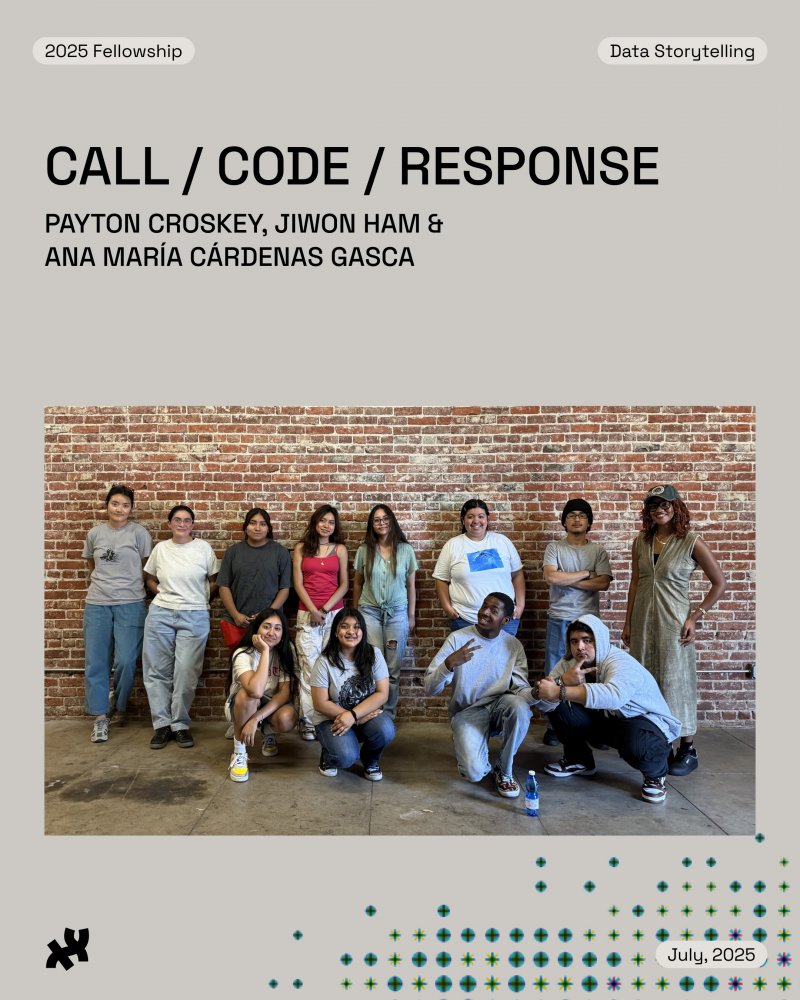
Payton Croskey is a tech justice scholar working at the intersection of AR, AI, and Afrofuturism, developing theoretical frameworks and technical methodologies for ethically locating, collecting and modeling marginalized communities and their data.
Ana Cardenas-Gasca is an HCI researcher with extensive experience developing AR for human connection and expression, such as memorialization, co-located playful interaction, live performance, and hybrid workspaces.
Jiwon Ham is a media artist and interactive designer creating generative art, animation and site-specific projection mapping for public spaces.
“Call / Code / Response” explores how creative coding can extend the expressive qualities of live performance, drawing from and merging with practices of hip-hop, slam poetry, and call-and-response. Using p5.js, a team of artists, researchers, and technologists will collaborate with youth creators to co-create interactive visuals that respond to the performer’s delivery and invite audience participation. Grounded in practices of collective authorship, the project will transform sound and movements into interactive and participatory performances that reflect lived experience, cultural memory, and the transformative potential of immersive storytelling.